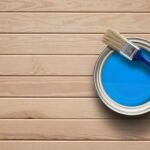Water pressure is a crucial factor that can greatly impact our daily activities at home. Whether it’s taking a shower, washing dishes, or watering the garden, adequate water pressure is essential for a smooth and efficient experience. However, many homeowners may find themselves dealing with low water pressure issues, which can be frustrating and inconvenient. In this article, we will explore various methods and solutions to improve water pressure at home.
Understanding the importance of water pressure is the first step towards addressing any related problems. Adequate water pressure is not only vital for everyday tasks but also plays a significant role in maintaining the overall functionality of your plumbing system. Low water pressure can lead to slow flow rates and insufficient supply, leading to delays and inefficiencies in household chores.
Identifying the causes of low water pressure is essential in determining the appropriate solution. While there can be several culprits behind this common issue, knowing how to diagnose and resolve them will help restore optimal water pressure levels in your home. By conducting a preliminary assessment and checking key components such as the faucet aerators, showerheads, and water pressure regulator, you can take proactive steps towards improving water pressure effectively.
In the subsequent sections of this article, we will explore various techniques to troubleshoot low water pressure at home. From simple fixes like cleaning faucet aerators to more advanced strategies like removing mineral deposits and clogs from pipes – each solution aims to enhance the performance of your plumbing system and boost water pressure throughout your household.
By following these tips and implementing proper maintenance measures, you will be able to ensure a refreshing experience every time you turn on the tap or hop in the shower.
Identifying the Causes of Low Water Pressure
Low water pressure can be frustrating and inconvenient, especially when it comes to daily tasks such as showering or washing dishes. Identifying the causes of low water pressure is the first step in finding a solution. There are several common culprits that could be causing your low water pressure, and each has its own potential solution.
One common cause of low water pressure is a clogged or faulty aerator. The aerator is the small screen at the end of your faucet, and it can become clogged with mineral deposits or debris over time. To fix this issue, simply remove the aerator from the faucet and soak it in vinegar overnight to dissolve any deposits. Rinse it off thoroughly and then reattach it to the faucet.
Another potential cause of low water pressure is a blockage in the pipes. Over time, pipes can accumulate mineral deposits and other debris that restricts the flow of water. One solution for this problem is to flush out your pipes by turning off all faucets and fixtures in your home, then turning on an outside faucet at full force for a few minutes. This will help to dislodge any buildup in the pipes and improve water pressure throughout your home.
If these solutions do not solve your low water pressure issues, there may be a problem with the main water line or valve outside of your home. In this case, it is best to call a professional plumber who can assess the situation and make any necessary repairs or adjustments.
| Cause | Solution |
|---|---|
| Clogged or faulty aerator | Remove and soak in vinegar overnight; rinse thoroughly |
| Blockage in pipes | Flush out pipes by turning on outside faucet at full force for a few minutes |
| Main water line or valve issue | Contact a professional plumber to assess and repair |
By identifying the causes of low water pressure in your home, you can take the necessary steps to improve it and enjoy better water flow throughout your daily activities.
Conducting a Preliminary Assessment
One of the first steps to improving water pressure at home is to conduct a preliminary assessment to determine if water pressure is indeed low. This will help homeowners identify the root cause of the issue and take appropriate measures to resolve it. Conducting a preliminary assessment involves a few simple steps:
- Check all faucets and fixtures: Start by checking the water pressure in all faucets and fixtures in your home, including sinks, showers, and toilets. Use a pressure gauge or a simple test like filling up a bucket within a specific time frame to measure the flow rate. If you notice weak water flow or slow-filling toilets, it indicates low water pressure.
- Inspect the main shut-off valve: The main shut-off valve controls the water supply entering your home. Make sure that it is fully open and not partially closed, as this can cause low water pressure throughout the house. If you find that it’s closed or partially closed, open it completely to see if it improves the water pressure.
- Examine hose bibs: Outdoor hose bibs are another area to check when assessing your water pressure. Connect a hose to them and turn on the faucet to see if there is sufficient flow and pressure. If you notice any issues with outdoor spigots, it could be an indication of low overall water pressure.
By following these preliminary assessment steps, homeowners can determine whether they are indeed experiencing low water pressure in their homes. Identifying this initial step lays the foundation for further investigation into potential causes and solutions for improving water pressure throughout the house.
References
- “How To Test Water Pressure” – The Spruce
- “Low Water Pressure: How To Diagnose & Repair Home Water Problems” – HomeServe
- “How To Check Your Home’s Water Pressure” – Direct Energy
Tips for Checking the Water Pressure Regulator
A water pressure regulator is a crucial component in maintaining and controlling water pressure in your home. It is responsible for reducing the high pressure from the main water supply to a safe and manageable level for household use. If you are experiencing low water pressure, one possible cause could be a malfunctioning or faulty water pressure regulator.
To check the water pressure regulator, follow these simple steps:
- Locate the Water Pressure Regulator: Typically, the water pressure regulator is located near the main water shut-off valve or where the main water line enters your home. It may be installed on the exterior of your house or in an underground valve box.
- Turn off Water Supply: Before performing any inspection or maintenance on the water pressure regulator, it is essential to turn off the main water supply to prevent any potential accidents or damage.
- Check for Leaks: Inspect the area around the water pressure regulator for any signs of leaks such as puddles of water or dampness. Leaks can indicate a problem with the regulator and may need to be addressed.
- Test Pressure Setting: Use a pressure gauge to measure the current water pressure. Attach one end of the gauge to an outdoor faucet or hose bib connected directly to your home’s plumbing system and turn on the faucet fully. The gauge will display the incoming water pressure level.
- Adjust Pressure Setting: Some water pressure regulators have an adjustable screw that allows you to increase or decrease the set point of the desired pressure level. If needed, use a wrench to make slight adjustments until you achieve your desired water pressure.
If after checking these steps, you find that your water pressure regulator is not functioning properly, it may need to be repaired or replaced by a professional plumber. A malfunctioning regulator can lead to both high and low-water pressures, causing damage to fixtures and appliances throughout your home.
By regularly inspecting and maintaining your water pressure regulator, you can ensure that your home’s water pressure remains at an optimal level, providing efficient water flow and a satisfying shower experience.
Troubleshooting Faucet Aerators and Showerheads
The water pressure from faucets and showerheads is a crucial factor in determining the quality of your showers and overall water usage at home. If you’re experiencing low water pressure, one of the first places to look for a solution is at the faucet aerators and showerheads. These components can often become clogged or damaged, leading to reduced water flow. Fortunately, there are simple fixes that can help improve water pressure without requiring professional assistance.
One common cause of low water pressure is mineral deposits or sediment buildup in the aerator or showerhead. Over time, these deposits can accumulate and block the flow of water, resulting in reduced pressure. To troubleshoot this issue, start by removing the aerator or showerhead and giving it a thorough cleaning. Soaking it in vinegar overnight can help dissolve any mineral buildup.
Another potential issue with faucet aerators and showerheads is a clogged screen or filter inside them. These screens are designed to trap debris and sediment before they reach your plumbing system. However, if they become too clogged, it can restrict the flow of water. To address this problem, carefully remove the screen or filter from the aerator or showerhead and rinse it under running water to remove any obstructions.
In some cases, faucet aerators or showerheads may be damaged or worn out, leading to decreased water pressure. If you’ve tried cleaning them but still experience low pressure, it may be time to replace these components. It’s important to choose the correct type and size of aerator or showerhead for your particular fixture to ensure optimal water flow. Consult your local hardware store or a plumbing professional for assistance if needed.
Here are some simple steps to troubleshoot faucet aerators and showerheads
- Remove the aerator or showerhead using pliers if necessary.
- Clean the component thoroughly by soaking it in vinegar overnight.
- Rinse the aerator or showerhead under running water to remove any remaining debris.
- Inspect the screen or filter inside for clogs and rinse it separately if necessary.
- If cleaning doesn’t improve water pressure, consider replacing the aerator or showerhead with a new one that matches your fixture.
By troubleshooting faucet aerators and showerheads, you can often resolve low water pressure issues without major repairs or expenses. Taking care of these simple fixes can go a long way in improving your overall water usage experience at home.
Unleashing the Power of Plumbing
Plumbing systems are prone to mineral deposits and clogs over time, which can significantly reduce water pressure in your home. These mineral deposits, commonly known as limescale, accumulate inside pipes, faucets, and showerheads due to the presence of minerals in hard water.
Clogs, on the other hand, are typically caused by debris and sediment buildup in the plumbing system. To maintain optimal water pressure, it is important to unleash the power of plumbing by implementing strategies to remove these deposits and clogs.
One effective way to remove mineral deposits is through descaling. Descaling involves using a descaling solution or a mixture of vinegar and water to dissolve and remove limescale buildup. To descale faucets and showerheads, you can detach them from their respective connections and soak them in the descaling solution for a designated period of time. After soaking, scrub any remaining residue with a brush and rinse thoroughly before reattaching.
For removing mineral deposits in pipes, a whole-house descaling approach may be necessary. This involves using specialized equipment that circulates the descaling solution throughout the entire plumbing system to eliminate limescale accumulations. It is advised to hire professional plumbers for this process due to its complexity.
In addition to mineral deposits, clogs can also contribute to low water pressure. Simple fixes like using plungers or drain snakes can be effective for clearing clogs in sinks, toilets, and showers.
Plungers work by creating suction pressure that dislodges minor blockages while drain snakes physically remove debris causing the clog. If you encounter stubborn clogs that cannot be resolved with these methods, it is recommended to seek assistance from professional plumbers who have access to more advanced tools such as hydro-jetters.
Overall, by addressing mineral deposits and clogs in your plumbing system promptly and effectively, you can improve your home’s water pressure significantly. Regular maintenance practices like descaling faucets and showerheads, as well as periodic whole-house descaling, can help maintain optimal water pressure and prevent future issues with low water pressure.
Additionally, adopting habits like using drain covers to catch debris and avoiding flushing or rinsing large objects down drains can aid in preventing clogs. It is important to remember that if you are unsure about any plumbing repairs or maintenance tasks, it is best to consult a professional plumber for expert advice and assistance.
| Strategy | Description |
|---|---|
| Descaling | Involves using descaling solutions or vinegar and water mixtures to dissolve mineral deposits. |
| Whole-House Descaling | A specialized approach that uses equipment to circulate descaling solution throughout the entire plumbing system. |
| Plungers | Create suction pressure to dislodge minor clogs in sinks, toilets, and showers. |
| Drain Snakes | Physically remove debris causing the clog by insertion into the drain. |
Evaluating Pipes and Plumbing System
Pipes and plumbing systems play a crucial role in maintaining optimal water pressure at home. Over time, these components can develop leaks or other issues that can contribute to low water pressure. In this section, we will explore how to evaluate pipes and plumbing systems, detect leaks, and address any issues that may be affecting water pressure.
Detecting Leaks
One of the most common causes of low water pressure is the presence of leaks in the pipes. Leaks can occur due to corrosion, aging pipes, or improper installation. To detect leaks, start by turning off all faucets and appliances that use water in your home.
Then, check your water meter reading. Wait for a few hours without using any water and check the meter again. If the reading has changed significantly, it indicates that there may be a leak somewhere in your plumbing system.
Addressing Issues
Once you have identified a leak or suspect an issue with your pipes or plumbing system, it is important to address it promptly to restore optimal water pressure. For minor leaks that are accessible, you may be able to fix them yourself using pipe tape or joint compounds.
However, for more significant leaks or complex plumbing issues, it is recommended to seek professional help from a licensed plumber. They have the expertise and tools necessary to assess the problem accurately and provide appropriate solutions.
Preventing Future Issues
To maintain optimal water pressure in the long term, regular maintenance and prevention measures are essential. Inspect your pipes periodically for signs of corrosion or damage and replace them if necessary. Consider installing pressure-reducing valves if your water pressure is consistently too high as this can protect your plumbing system from excessive strain. It is also important to avoid pouring grease or other substances down drains as they can cause clogs over time.
By evaluating pipes and plumbing systems regularly, detecting leaks promptly, and addressing issues as they arise, you can ensure optimal water pressure in your home. Taking preventive measures and conducting routine maintenance will not only improve the water pressure but also extend the lifespan of your plumbing system, saving you from costly repairs in the future.
Exploring Advanced Solutions
Understanding Pump Systems and Pressure-Enhancing Devices
Sometimes, the low water pressure in a home may require more than just simple fixes or adjustments. In these cases, it may be necessary to explore advanced solutions such as using pump systems or pressure-enhancing devices. These options can significantly increase water pressure and ensure that you have adequate water flow throughout your home.
Boosting Water Pressure with Pump Systems
One option for boosting water pressure is to install a pump system. Pump systems work by increasing the pressure of the water as it flows through your plumbing system. There are different types of pump systems available, including booster pumps and well pumps.
Booster pumps are commonly used when the main water supply from the municipal line does not provide enough pressure. These pumps can be installed near the main water line and are designed to increase the overall water pressure in your home. Well pumps, on the other hand, are typically used in homes that rely on well water. These pumps draw water from underground sources and then pressurize it before delivering it to your faucets and appliances.
When considering a pump system, it is essential to work with a professional plumber who can assess your specific needs and recommend the appropriate type of pump for your situation. They will also ensure that the installation is done correctly and in accordance with local plumbing codes.
Utilizing Pressure-Enhancing Devices
Another option for boosting water pressure is to use pressure-enhancing devices. These devices are typically installed at individual fixtures or appliances where low-pressure issues are most noticeable, such as showers or faucets.
Pressure-enhancing devices work by either restricting flow to increase velocity or using air chambers to compress air and create additional pressure. Some examples of these devices include showerhead restrictors, faucet aerators with increased flow rate, or pneumatic devices that inject air into the pipes.
It’s important to note that while pressure-enhancing devices can be an effective solution for improving water pressure at specific fixtures, they may not address overall low water pressure throughout the entire home. If you are experiencing widespread low water pressure, it may be necessary to explore other options like pump systems or addressing underlying plumbing issues.
By considering advanced solutions such as pump systems or pressure-enhancing devices, homeowners can effectively boost water pressure and ensure a more enjoyable and efficient water flow experience throughout their homes. However, it’s crucial to consult with a professional plumber to determine the best course of action based on your specific needs and circumstances. Understanding the pros and cons of these advanced solutions will help you make an informed decision and ultimately enhance your water pressure at home.
Safety First
Water pressure increases can occur unexpectedly and can lead to various issues such as burst pipes, leaks, and damage to appliances. It is important for homeowners to know how to handle water pressure increases safely and effectively. This section will provide some best practices for dealing with water pressure increases and implementing pressure relief measures.
One of the first steps when experiencing a sudden increase in water pressure is to locate the main shut-off valve for your home’s water supply. This valve is typically located near the water meter or where the main line enters your property. By shutting off the main valve, you can stop the flow of water into your home and prevent any further damage from occurring.
It is also important to release any trapped air in your plumbing system after a sudden increase in water pressure. To do this, open all faucets in your home including sinks, tubs, and showers. Allow the water to run for a few minutes until it flows smoothly without sputtering or spurting. This will help remove any air that may have become trapped in the pipes due to the increased pressure.
Another best practice for handling water pressure increases is to install a pressure relief valve or a pressure reducing valve (PRV) if you don’t already have one. These valves are designed to automatically relieve excess pressure in your plumbing system and protect against potential damage. A qualified plumber can help assess your home’s needs and install the appropriate valve.
| Best Practices | Benefits |
|---|---|
| Locate and shut off the main valve | Prevents further damage from occurring |
| Release trapped air from plumbing system | Prevents sputtering or spurting of water |
| Install a pressure relief valve or PRV | Automatically relieves excess pressure and protects against damage |
By following these best practices and implementing pressure relief measures, homeowners can effectively handle water pressure increases and safeguard their plumbing system. It is always recommended to consult with a professional plumber for proper installation and maintenance of these measures to ensure optimal performance and safety.
Maintenance and Prevention
Maintaining and improving water pressure at home requires proactive maintenance and prevention strategies. By implementing these long-term measures, homeowners can ensure a consistent and optimal water pressure experience.
Regular Inspection and Maintenance
One of the key ways to maintain water pressure at home is by conducting regular inspections of the plumbing system. Inspect all visible pipes for potential leaks, cracks, or signs of deterioration. Additionally, keep an eye out for any sudden changes in water pressure or any unusual sounds like banging or whistling that could indicate underlying issues. It’s important to address any problems promptly to prevent further damage and maintain adequate water pressure.
Moreover, perform routine maintenance tasks to prevent clogs and mineral deposits from accumulating within the pipes and fixtures. This includes cleaning faucet aerators and showerheads regularly to remove sediment buildup that can restrict water flow. For faucets with removable aerators, soak them in a vinegar solution overnight to dissolve mineral deposits.
Water Softening System
Hard water is a common problem that can lead to decreased water pressure over time due to scale buildup in pipes and fixtures. Installing a water softening system can help combat this issue by removing minerals such as calcium and magnesium from the water supply. A water softener replaces these minerals with sodium ions through a process called ion exchange, preventing scale formation inside pipes, faucets, showerheads, and other fixtures.
It’s important to note that while a water softening system helps improve overall water quality and maintain better water pressure over time, it may not be necessary for every household. If hard water is not a prevalent issue in your area or if you don’t want the additional maintenance associated with a softening system, other preventive measures may suffice.
Conservation Practices
Conserving water not only benefits the environment but can also help promote better water pressure at home. Avoid using multiple high-demand appliances simultaneously, such as the dishwasher, washing machine, and shower. Overloading your plumbing system can strain water pressure by distributing it across various fixtures. By staggering usage and being mindful of simultaneous water demands throughout your home, you can help maintain consistent water pressure.
Additionally, educate everyone in your household on water conservation practices such as turning off the faucet while brushing teeth or shaving and fixing any leaks promptly. This not only helps in preserving water resources but also reduces the strain on your plumbing system and ensures optimal water pressure.
By implementing long-term maintenance and prevention strategies like regular inspections, routine cleaning, installing a water softening system (if necessary), and practicing conservation measures, homeowners can maintain and improve water pressure at home. These proactive steps will help ensure a refreshing experience every time water is used throughout the house.
Conclusion
In conclusion, understanding and improving water pressure at home is crucial for a refreshing and enjoyable experience. By identifying the causes of low water pressure and conducting a preliminary assessment, homeowners can take the necessary steps to determine if their water pressure is low and find solutions to fix it. Checking the water pressure regulator, troubleshooting faucet aerators and showerheads, and removing mineral deposits and clogs are all simple fixes that can significantly improve water pressure.
Furthermore, evaluating pipes and the plumbing system is essential in detecting leaks and addressing any issues that may be hindering optimal water pressure. For those looking for more advanced solutions, pump systems or pressure-enhancing devices can provide a significant boost in water pressure. However, it is important to prioritize safety when handling any increases in water pressure by following best practices and implementing proper pressure relief measures.
Finally, maintaining and preventing issues with your plumbing system is crucial for long-term improvement of water pressure. Regular maintenance can help address any potential problems before they become more significant. By empowering homeowners with the knowledge gained from this article, they can now take control of their own water pressure situation and ensure a more refreshing experience throughout their homes.
Frequently Asked Questions
Can you increase the water pressure in your house?
Increasing the water pressure in your house is possible, but it depends on various factors. The water pressure coming into your house is typically regulated by the municipal water supply system or a well pump if you have your own well.
If the water pressure is already set at its maximum capacity, you may not be able to increase it further. However, if you determine that the incoming water pressure can be increased, you could consider installing a booster pump or adjusting the pressure regulator to raise the water pressure in your house.
How do I increase water pressure in my home plumbing?
To increase water pressure in your home plumbing, there are several steps you can take. First, check if the main shut-off valve near your water meter is fully open as an insufficiently open valve can restrict water flow and lower pressure. Make sure any other valves throughout your plumbing system are also completely opened.
If these steps do not solve the issue, consider checking for any clogs or blockages in your pipes and removing them to improve water flow. Additionally, upgrading to larger diameter pipes can allow for more efficient water movement and increased pressure.
How can I increase my water pressure naturally?
Increasing your water pressure naturally involves methods that don’t require mechanical devices or adjustments. One way to potentially enhance natural water pressure is by cleaning or replacing clogged aerators and showerheads which might be obstructing flow and decreasing pressure.
Another option is to examine the overall plumbing system for any leaks that might be causing reduced pressure; fixing these leaks can help restore normal levels of water flow. Additionally, ensuring that all valves and faucets are fully opened facilitates maximum flow throughout the system naturally without additional interventions required.

I’m thrilled to have you here as a part of the Remodeling Top community. This is where my journey as an architect and remodeling enthusiast intersects with your passion for transforming houses into dream homes.





